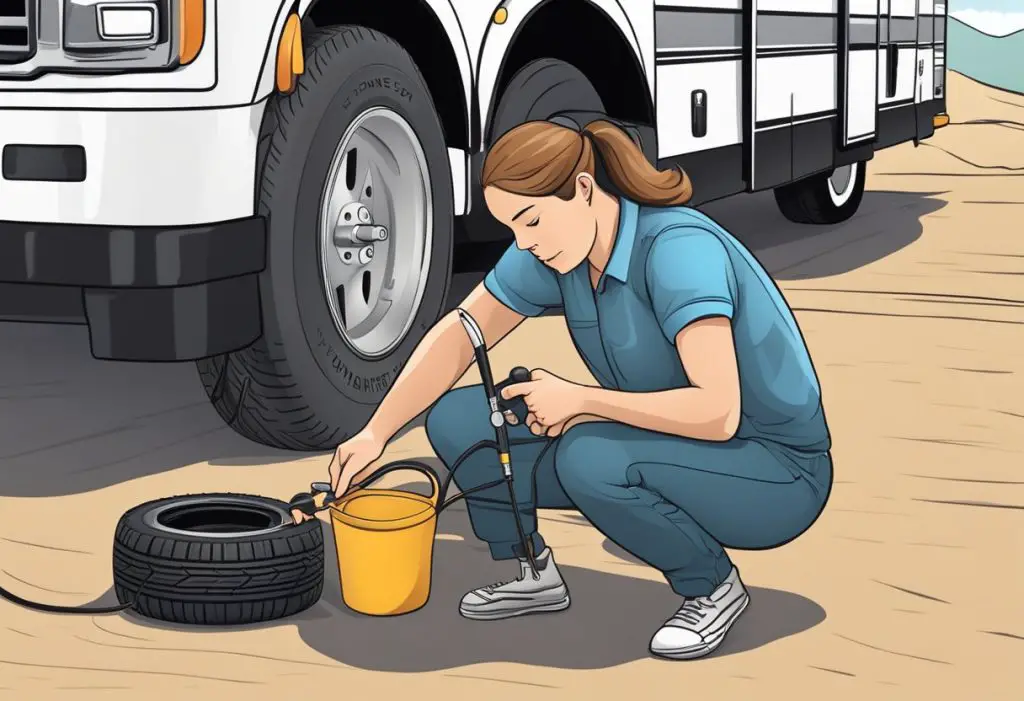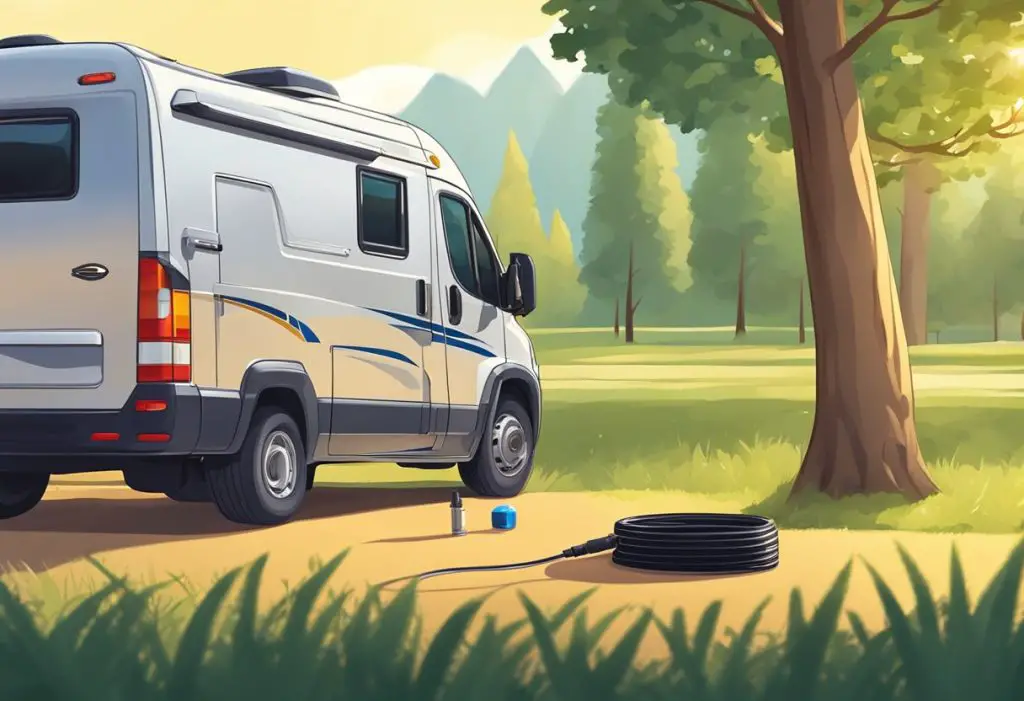Would you like to save this article?
Checking RV tire pressure is crucial for maintaining safety and performance on the road. Proper tire maintenance can prevent accidents, improve fuel efficiency, and extend the life of your tires. Ensuring your RV tires are inflated to the correct pressure is an essential part of routine maintenance.
In this article, you will learn a straightforward process to check your RV tire pressure effectively. This guide will help you understand the importance of regular tire pressure checks and provide practical tips to keep your RV running smoothly.
1) Check pressure when tires are cold
It’s important to check the tire pressure when the tires are cold. This means doing it in the morning before the RV has been driven and before the sun has had a chance to warm the tires.
Cold tires provide the most accurate pressure reading. Warm tires can give a false reading due to the expansion of air inside the tire.
By checking when they’re cold, the reading will reflect the true pressure, helping to maintain safety and performance on the road.
2) Use a reliable tire pressure gauge
Using a reliable tire pressure gauge is essential for ensuring your RV’s tires are properly inflated. These gauges come in various types, including digital and analog.
Invest in a quality tire pressure gauge rather than opting for the cheapest option. Quality gauges maintain their accuracy over time and provide more consistent readings.
When selecting a gauge, consider one with a dual foot design if you have dual tires. This makes accessing and checking the pressure of both inner and outer tires easier. Digital gauges are often preferred for their readability and accuracy.
Regularly calibrate your gauge or have it checked for accuracy. Over time, even the best gauges can lose precision, which might lead to incorrect readings and potentially unsafe driving conditions.
By consistently using a reliable tire pressure gauge, you’ll be able to maintain the right pressure, ensuring a smoother and safer journey.
3) Reference the RV owner’s manual for recommended PSI levels
The RV owner’s manual is a crucial resource for determining the correct tire pressure. It includes the manufacturer’s recommended PSI levels for maintaining optimal performance and safety.
The manual’s guidelines are specific to your RV model and take into account weight distribution and load capacity.
Always consult it before adjusting tire pressure to ensure you’re meeting the recommended specifications. Skipping this step can impact both safety and fuel efficiency.
4) Inspect for any visible damage or wear
Checking for visible damage or wear on your RV tires is essential. Even if you own a quality RV, you still want to look closely at the tire walls for cracks, bulges, or bubbling. These signs can indicate structural issues that might lead to a blowout.
Inspect the tread for uneven wear patterns. Uneven wear could suggest alignment issues or improper inflation. Additionally, check for any embedded objects, like nails or glass, which could result in a puncture. Regularly examining your tires helps catch potential problems early, ensuring a safer journey.
5) Adjust pressure to match load weight
Tire pressure should align with the load weight of the RV. Begin by determining the weight of the RV when fully loaded. Utilize RV axle weight scales to get accurate measurements.
Consult tire load charts to find the recommended PSI for each axle’s weight. Each tire must carry a portion of this load safely.
Adjust each tire’s pressure based on these specifications. This ensures better handling and tire longevity. Proper inflation prevents excessive wear and maintains safety on the road.
6) Don’t forget the spare tire
It’s easy to overlook the spare tire when doing routine checks. However, ensuring its proper inflation is crucial. An under-inflated spare can be just as problematic as a flat tire in an emergency.
The spare should be checked for pressure whenever the main tires are checked. Keep the spare tire inflated to the manufacturer’s recommended PSI.
Store the spare tire in an easily accessible location. This ensures quick and easy access during emergencies, saving valuable time. Regularly inspect the tire for signs of wear or damage.
Incorporate the spare tire into periodic maintenance routines. This simple step can prevent unexpected issues down the road.







